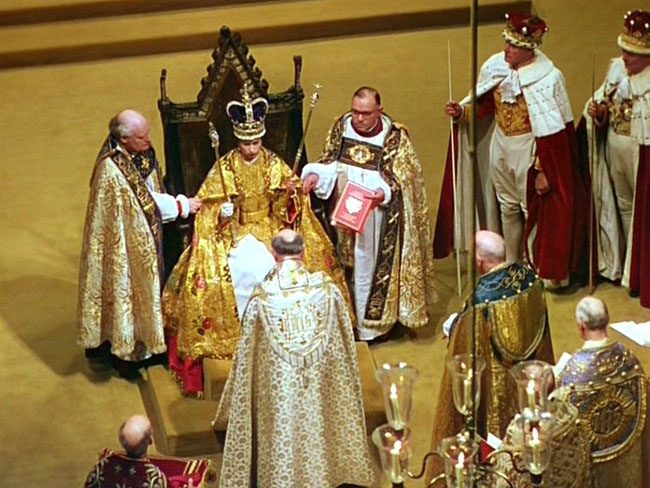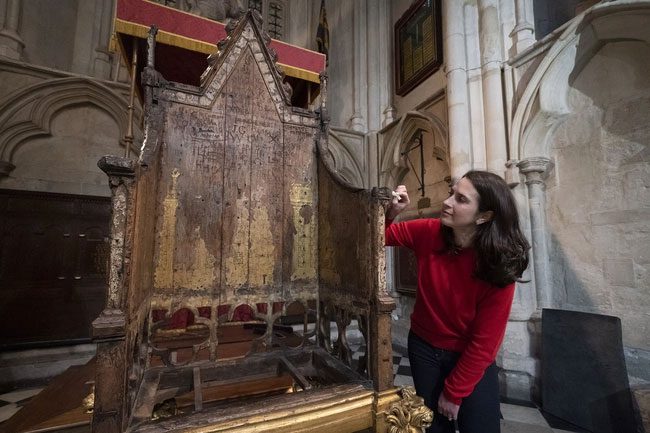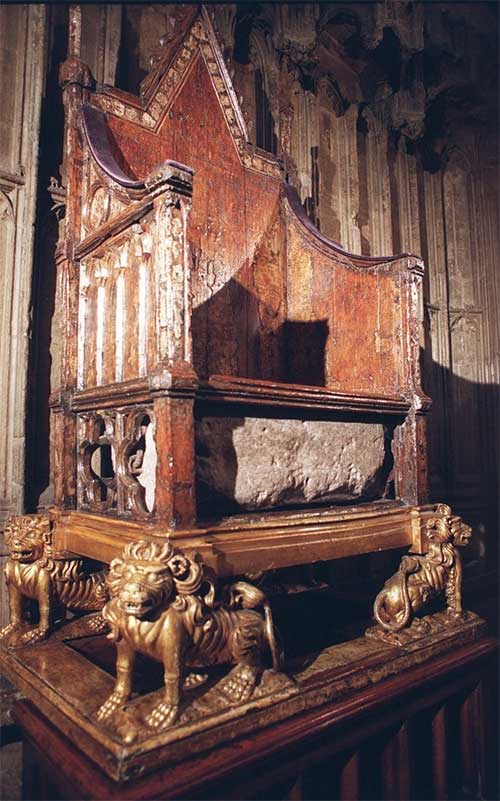As the coronation of King Charles III approaches on May 6, preparations are being carried out with utmost care and urgency. At Westminster Abbey, restorers are working diligently to restore the 700-year-old throne for King Charles III to use during his ceremony.

The throne used at the coronation of the late Queen Elizabeth.
This delicate chair has been the centerpiece of British royal coronations for centuries, including those of King Henry VIII, King Charles I, Queen Victoria, and Queen Elizabeth II.
Notably, according to a representative from Westminster Abbey, the throne is “one of the most famous and valuable pieces of furniture in the world.” Given its age, the condition of the throne is considered quite good, but it still requires restoration before it can be used for the coronation.

Restorer Krista Blessley cleaning the coronation chair.
This ancient chair was commissioned by King Edward I, who ruled the Kingdom of England from 1272 to 1307. Beneath the seat is a small compartment designed to hold the Stone of Destiny – an ancient symbol of the Scottish monarchy.
According to CNN, the Stone of Destiny was once used as a seat during the coronations of Scottish kings and is regarded as a sacred object, though its origins remain unclear.
In 1296, King Edward I seized the Stone along with the Crown and Scepter of the Scottish monarchy and brought them to London. Since 1996, the Stone has been returned to Scotland. However, it will still be transported to London to accompany the throne for each coronation event.

The Stone of Destiny placed directly under the throne seat.
Originally, the coronation chair was gilded and decorated with colorful glass fragments. Additionally, the backrest features carvings of birds, foliage, and images of a king.
Krista Blessley, who conserves the paintings at the Abbey, is responsible for restoring the coronation chair. Her job entails using sponges and cotton swabs to gently clean the chair’s surface, removing ingrained dirt while reinforcing the remaining gold leaf.
In an interview with PA, Blessley expressed, “It is a great honor for me to work on the coronation chair. It is truly significant to the history of the country and the monarchy.”

Graffiti on the back of the chair believed to be from the 18th or 19th century.
Despite its immense historical significance, the conservation efforts for this aged chair have not been entirely effective. Upon closer inspection, one can easily spot graffiti on the back of the chair, believed to be from the 18th or 19th century, created by local schoolboys or visiting tourists.
Additionally, there is an inscription that reads: “P. Abbott slept on this chair from July 5 to 6, 1800.”
According to the Abbey’s statement, the restoration work will not alter any existing markings on the chair but will merely help preserve them, not only for the coronation but for many centuries to come.





















































